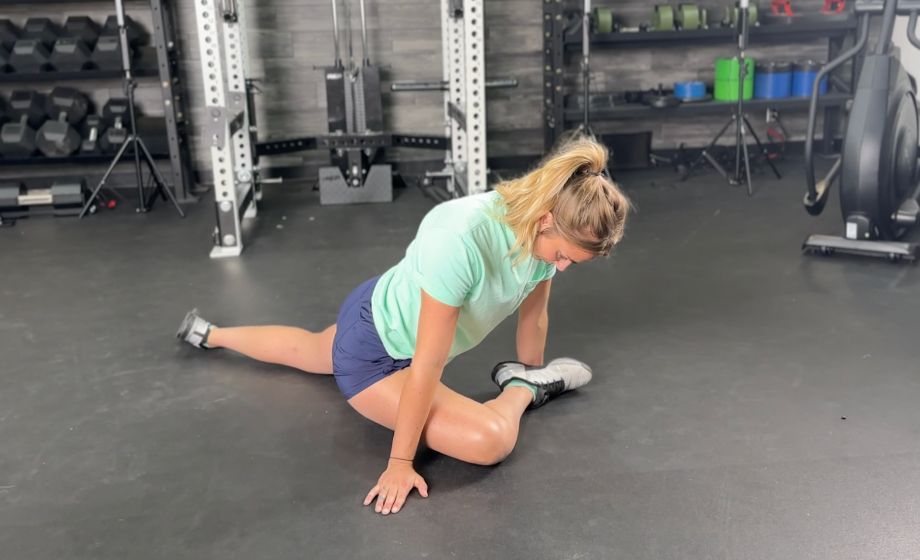We test and review fitness products based on an independent, multi-point methodology. If you use our links to purchase something, we may earn a commission. Read our disclosures.
Chubbs Peterson from Happy Gilmore famously said that the perfect golf swing is “all in the hips,” but your hips enable you to do so much more than just swing a golf club!
Your hip muscles facilitate various sport-specific movements, like kicking a soccer ball, throwing a mean right cross, and running with excellent form, while good hip mobility exercises make activities like yoga, gymnastics, and dancing smoother and more fluid.
Perhaps the most important reason to strengthen your hip muscles and do hip flexor exercises, however, is because of their role in providing balance and stability to your stance and gait1, making everyday activities like walking, running, sitting, and standing easier and more pain-free to perform.
“Your hip flexors are among some of the most crucial muscles in the body,” says Dr. Michael Masi, doctor of physical therapy. “They’re key in stabilizing the pelvis and spine, as well as protecting your lower back from injury during exercise and everyday living activities.”
If you want to reduce your risk of experiencing hip pain, lower back pain, or any other aches, you’ll want to add a few hip flexor exercises into your lower-body workout routine, and we’ve got 12 to share to get you started!
So, grab your water bottle, get your warm-up exercises in, and get ready to get to work!
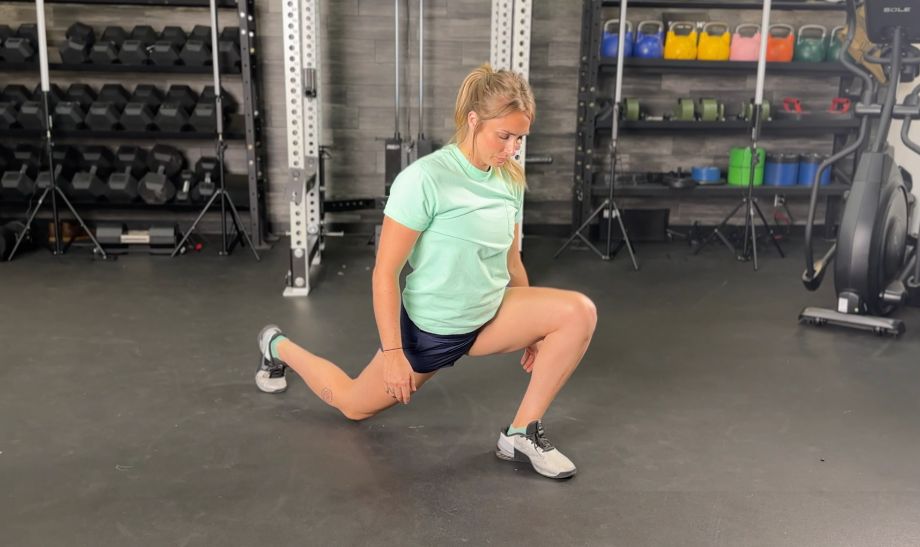
Your Hip Flexors Explained
The hip is a complex ball-and-socket joint that enables a multitude of movements, most of which will drastically improve your ability to perform everyday activities. There are different muscle groups working in the region, including the hip flexors, short external rotators, hip adductors, and hip abductors.
Today, we’re focused on the flexors, which enable “hip flexion” or that movement where you bring your thigh toward your torso.
The main hip flexor muscles include:
- Iliopsoas: Considered the primary hip flexor, the iliopsoas is actually two muscles, the psoas major and the iliacus, which begin at the lower back and insert onto the femur.
- Rectus femoris: Also categorized as one of the four quadriceps muscles, the rectus femoris plays a critical role in knee extension while also assisting in hip flexion.
- Sartorius: The sartorius runs across the front of the thigh, assisting in hip flexion, knee flexion, and knee rotation.
- Pectineus: Located deep within the pelvis, the pectineus is another of the key hip flexor muscles, assisting hip flexion and adduction.
Your hip flexor muscles mostly exist to, well, flex the hip joint, but athletes will also rely on them to perform an efficient hip hinge movement during fundamental exercises like deadlifts, back squats, and kettlebell swings to name a few.
“Hip flexors assist the hip hinge movement by controlling the lowering phase of the movement,” says Dr. Masi. “They also contribute to an anterior pelvic tilt, which helps you maintain a neutral spine and proper alignment.”
For more efficient movement mechanics, it’s important to strengthen this often-overlooked muscle group regularly.
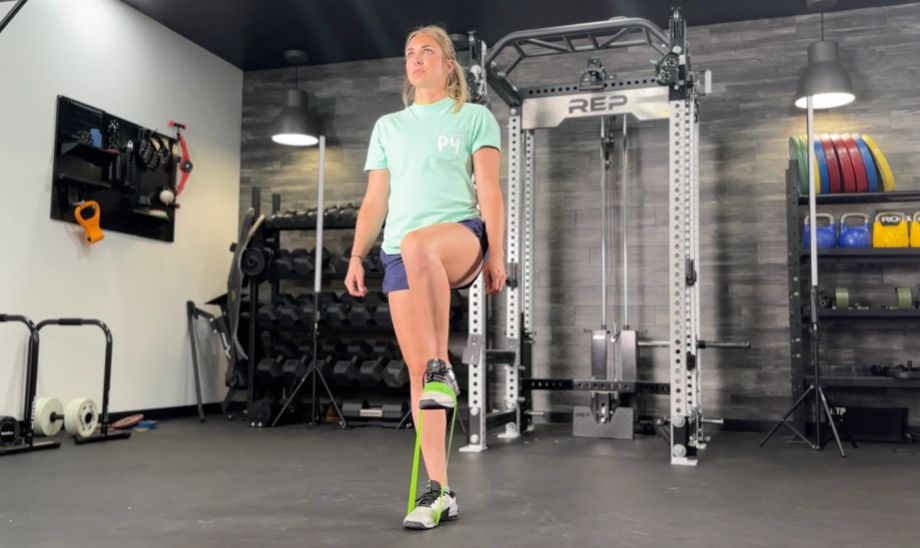
Common Hip Flexor Problems
Improving your biomechanics isn’t the only reason you want to give the hip flexors their due.
A 2021 review published in Clinics in Sport Medicine2 estimates approximately 5% to 28% of sports injuries in high-risk groups affect the hip flexors and/or iliopsoas.
The most common hip flexor injuries include:
- Hip flexor strain
- Hip flexor tendinitis
- Hip flexor spasm
Doing too much running, jumping, explosive movements, or plyometric exercises could contribute to injuries and conditions such as these, but sometimes the cause of the pain is less bombastic.
Sometimes, it’s literally just from sitting. That’s it.
“It is very common to have poorly extensible hip flexors,” says Dr. Masi, “and it’s often the result of sitting for prolonged periods of time. That’s why it’s so important, whether you’re at home or in the office, to get up and move regularly!”
RELATED: The Best At-Work Stretches
Hip flexor tightness limits your range of motion, may compromise your ability to move efficiently and maintain proper form, and may contribute to low back pain, the leading cause of global disability3.
That’s why targeting and strengthening your hip flexors isn’t just about enhancing your athletic performance; it’s about protecting and preserving your body so you can live your happiest, healthiest, most pain-free life!
How to Target the Hip Flexors
According to a 2021 review published in the International Journal of Environmental Research and Public Health4, stretching is critical for reducing hip flexor tightness and alleviating pain in the lumbar spine.
Since the hip flexors are activated most when we close the distance between our thighs and torso, movements that feature this specific movement mechanic will be the most helpful.
“By incorporating a combination of stretches and hip flexor strengthening exercises,” says Dr. Masi, “we can alleviate hip flexor tightness, reduce pain in the hips and the back, and promote better overall health and well-being.”
Best Hip Flexor Exercises
Have we sold you on the value of targeting and strengthening your hip flexors just yet?
Then, without further ado, we’re moving onto the best hip flexor exercises!
The first half of our list will be devoted to movements that improve hip flexor mobility and flexibility, while the latter half will list strengthening exercises that help increase strength and power.
Deep Lunge Stretch (Basic Hip Flexor Stretch)
Why it’s great: Lunge exercises make one heck of a movement, but simply holding it as a stretch provides activation in various muscle groups, including the quadriceps, glutes, hamstrings, and calves. They also stretch the rectus femoris.
How to do it:
- Starting with your feet hip-width apart, step your left foot forward and lean into it, bending at the knee. As you shift your weight forward, lower your right knee toward the ground.
- Hold the position for a few breaths, then return to the starting position.
- Now, switch legs. Step forward with your right foot this time and bring your left knee toward the ground. Hold the position for a few breaths, then rest.
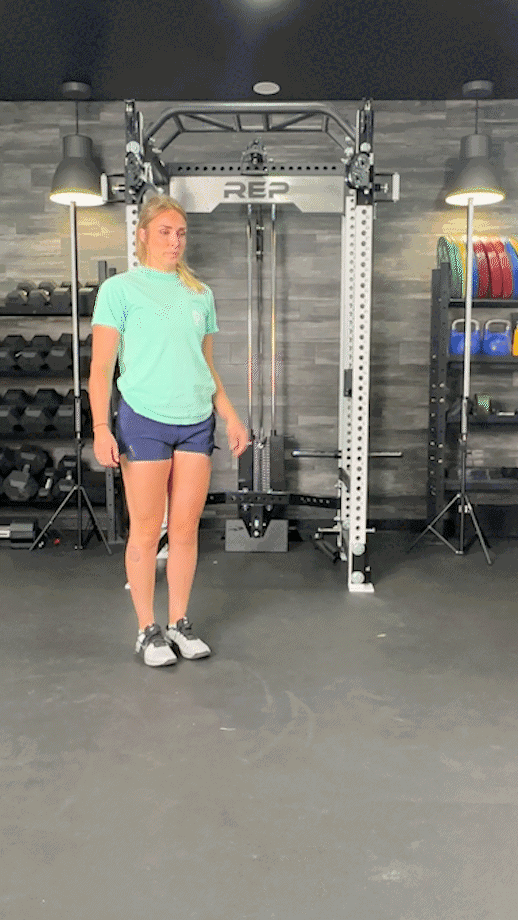
World’s Greatest Stretch
Why it’s great: The “world’s greatest stretch” targets virtually every muscle group in the body, loosening things up and providing some much-needed relief to your everyday aches and pains. Of course, it will provide ample activation to today’s target group— the hip flexors.
How to do it:
- From the high plank position, step your left foot forward into a deep lunge.
- Place your left elbow on the ground, or as close as you can get it, on the inside of your left foot. Hold the position briefly.
- Now, place your right hand on the ground, reach your left hand to the ceiling, twisting your torso. You will feel a nice stretch in your spine. Hold the position briefly.
- Slowly return to the starting position, switch sides, and repeat for your other side.
RELATED: The Best Stretches Before Running
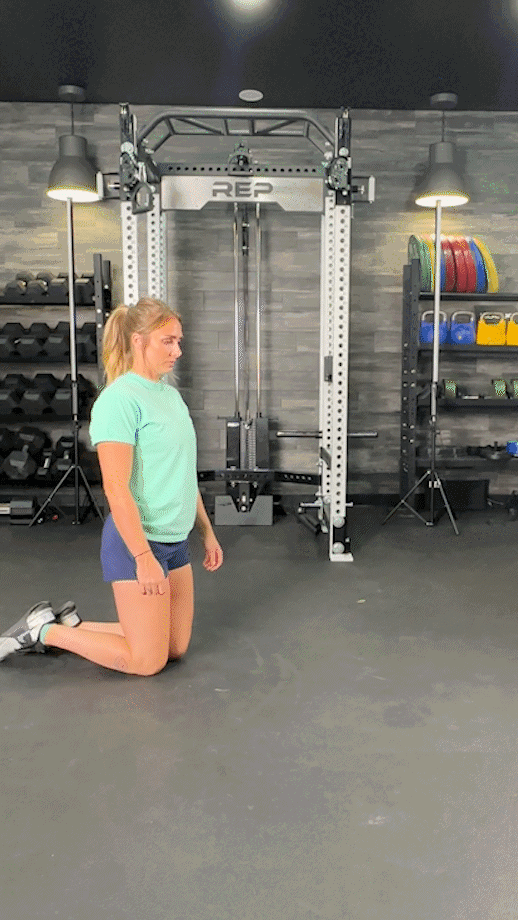
Half-Pigeon Pose
Why it’s great: The full pigeon pose is a doozy, but the half-pigeon provides many of the same benefits. It’ll stretch many muscle groups in the lower body, including the hip flexors, as well as opening the chest.
How to do it:
- From a downward dog position, bring your right foot toward your right wrist, lowering your knee and shin down to rest on the mat.
- Straighten your left leg behind you while aligning your right knee with your right hip.
- Hold the position, then straighten your arms and slowly return to downward dog.
- Switch sides and repeat.
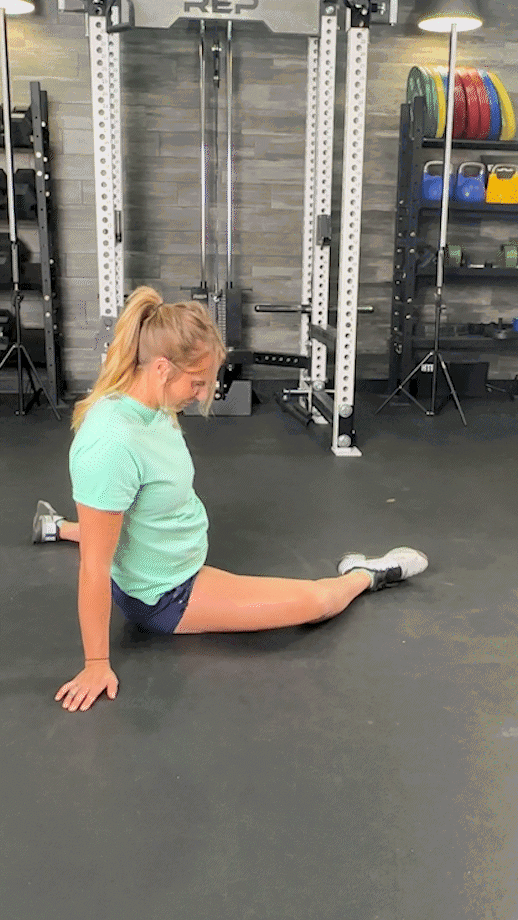
Pigeon Pose
Why it’s great: Take that half-pigeon and kick it into overdrive! The standard pigeon pose is challenging, but provides incredible activation in the hip flexors, glutes, and piriformis.
How to do it:
- From a half-pigeon pose, walk your hands forward and lower your forehead to the mat.
- Hold the position, then walk your hands back, straighten your arms, and step back into your downward dog.
- Switch sides and repeat.
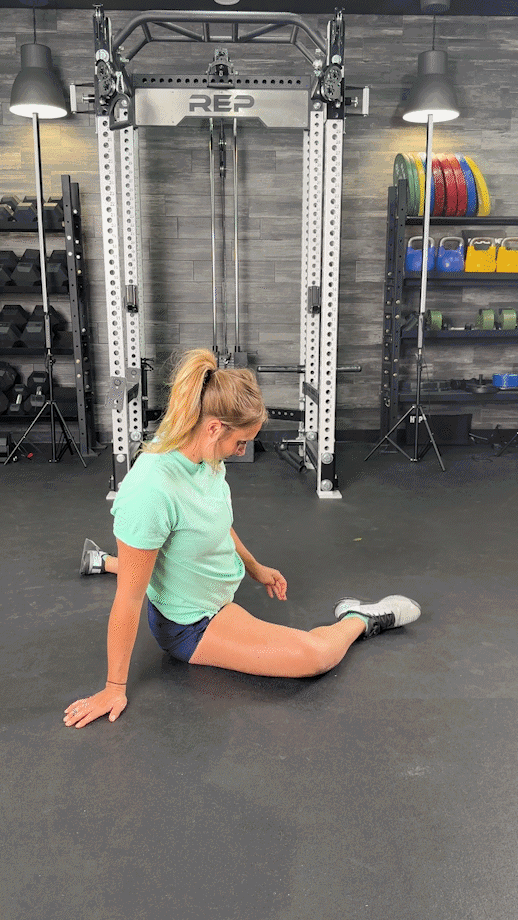
90/90 Stretch
Why it’s great: The 90/90 stretch modifies the pigeon pose further, making it more accessible while providing the same great activation to the hip flexors, as well as the glutes, piriformis, psoas, hip abductors, and adductors.
How to do it:
- Sit on the floor and bend your right leg at a 90-degree angle in front of your body.
- Extend your left leg to the side and bend your left knee at a 90-degree angle as well.
- Do not let your torso twist. You want your shoulders square with the original direction you were facing and your back straight.
- Lean your chest forward, keeping the upper body strong and your lower body in contact with the floor.
- Hold the position, then switch sides and repeat.
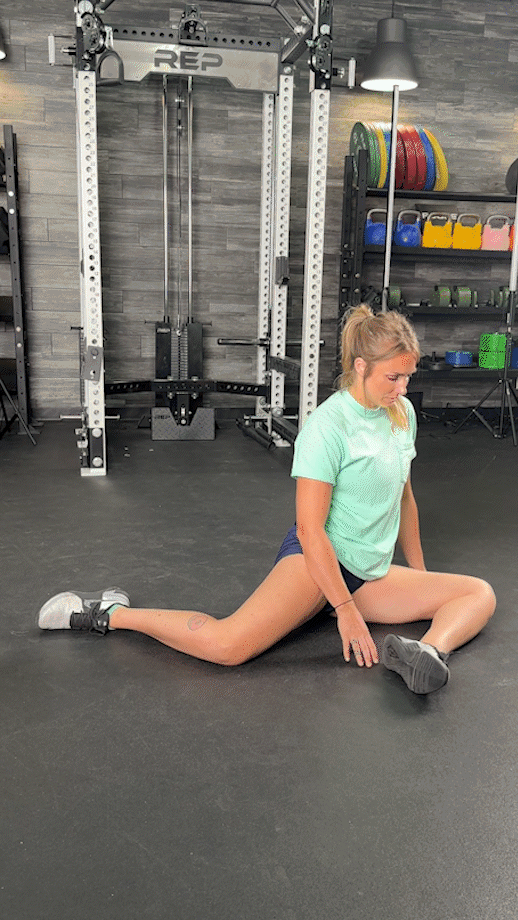
Side-Lying Hip Flexor Stretch (Side-Lying Quad Stretch)
Why it’s great: By performing this stretch in the lying position, you improve your hip mobility while working to alleviate both hip and back pain.
How to do it:
- Lie on your left side on the floor. Bend your knees so they are in line with your hips.
- Bring your right foot back and gently grab the top of the ankle with your right hand.
- Give the foot a light pull while keeping your pelvis tucked under. You should feel a stretch in the front of your thighs and in the hip flexors on your right side.
- Switch sides and repeat.
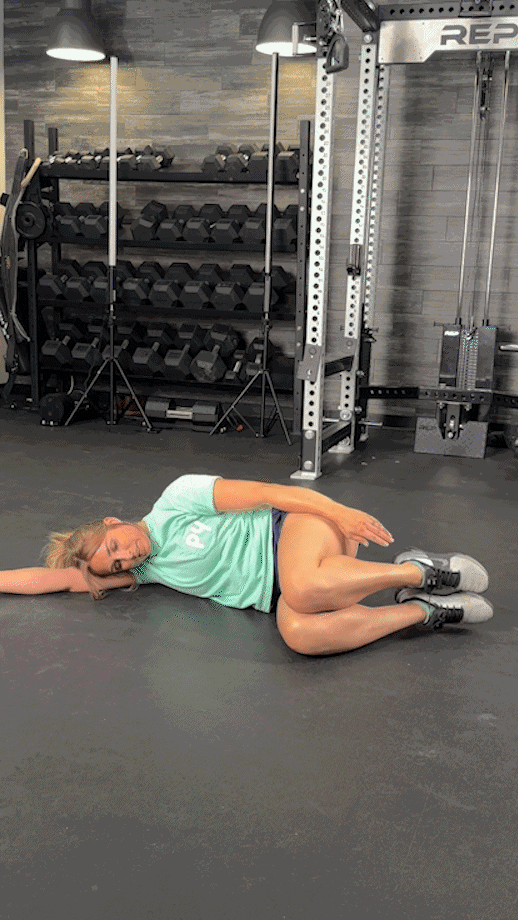
Straight Single-Leg Raise
Why it’s great: Straight leg raises are great for strengthening the quads and hip flexors. They’re simple, easy to learn and perform, and are super gentle on the joints.
How to do it:
- Lie in the hooklying (supine with your legs bent) position on the mat.
- Straighten one leg completely and raise it into the air.
- Slowly lower it back to the mat.
- Repeat for the desired number of reps.
- Now do the same for the opposite leg.
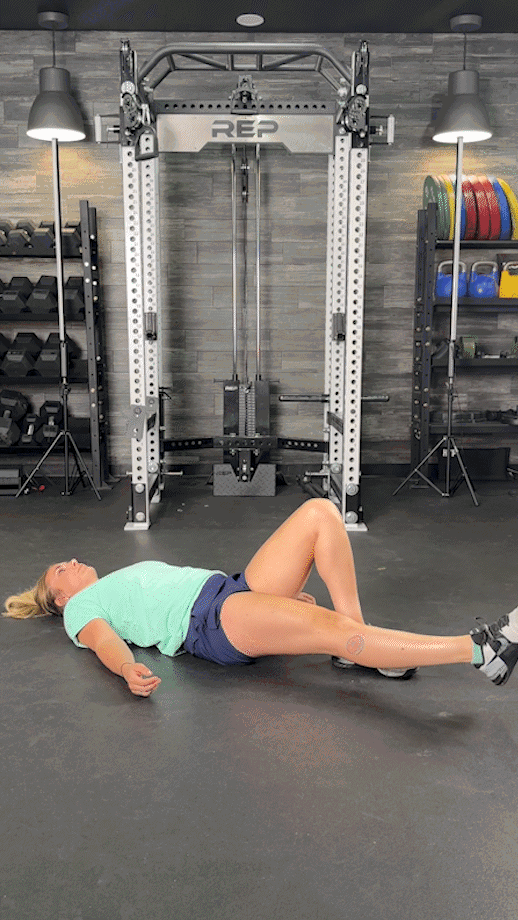
Lunges
Why it’s great: There’s a reason most personal trainers will rank the humble lunge among the best low-impact bodyweight exercises of all time. Lunges activate nearly every muscle group in the lower body while opening the hips to improve mobility and flexibility as well.
How to do it:
- Stand with your feet hip-width apart, then step forward with your left foot, dropping the right knee toward the floor.
- Hold the position briefly
- Push off the floor with your left foot, returning to the starting position.
- Repeat for your other side.
RELATED: What Muscles Do Lunges Work?
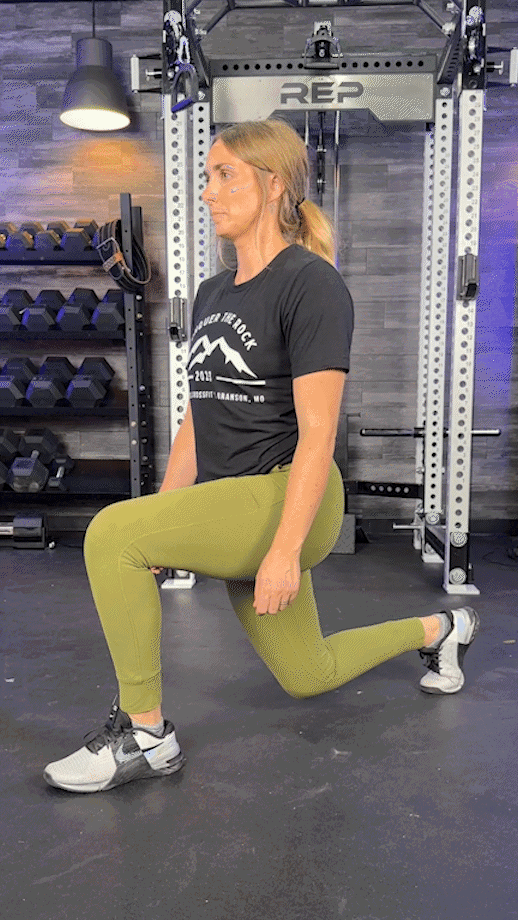
Bulgarian Split Squats
Why it’s great: The Bulgarian split squat takes the standard split squat to another level— literally! By elevating the back leg, you intensify the impact, effectively improving the mobility of your hips, knees, and ankles.
How to do it:
- Place a gym bench or similarly-sized sturdy object behind you. For our purposes, we’ll assume it is a bench.
- Place one foot on the bench behind you, then bend your front knee and lower yourself into a squat while keeping a tall torso. Your front knee should form a 90-degree angle.
- Drive through your front heel to return to a standing position.
- Repeat as needed, then switch sides.
RELATED: The Best Quad Exercises To Build Bigger, Stronger Legs
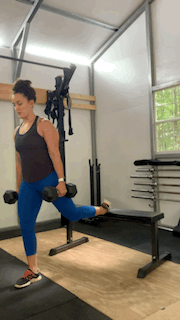
Sliding Mountain Climbers
Why it’s great: Sliding mountain climbers take the already excellent mountain climber movement and make it more fluid. Enjoy activation in your upper body, including your shoulders, triceps, chest, and core, and lower body, including the hip flexors, glutes, quads, calves, and hammies.
How to do it:
- Get into a high plank position with your feet placed on exercise sliders. If you do not have exercise sliders, you may use furniture sliders, hand towels, or other household objects to reduce friction.
- Slide one foot forward by pulling the knee into your chest. Simultaneously slide the other leg backwards, as though running in place.
- Slide your front foot to the back, extending the leg, while bringing the back foot forward.
- Continue for the desired number of repetitions.
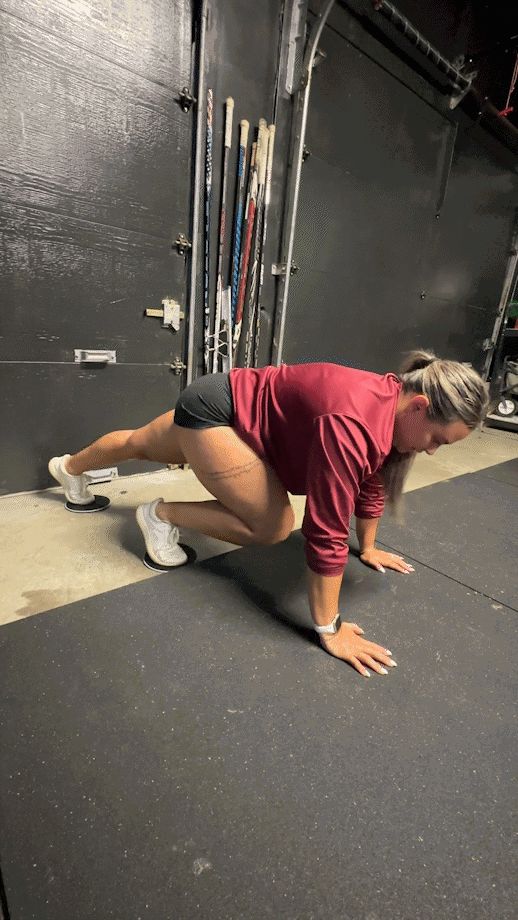
Standing Psoas Holds
Why it’s great: The standing psoas hold is excellent for isolating the psoas muscles. By lifting your knee above 90-degrees, you reduce the amount of assistance you’ll receive from the adjacent rectus femoris and TFL muscles, really working to strengthen the psoas muscles.
How to do it:
- Standing straight, pull one knee up to your chest as high as possible.
- Hold the position for the desired duration.
- Set the foot down, then switch sides and repeat.
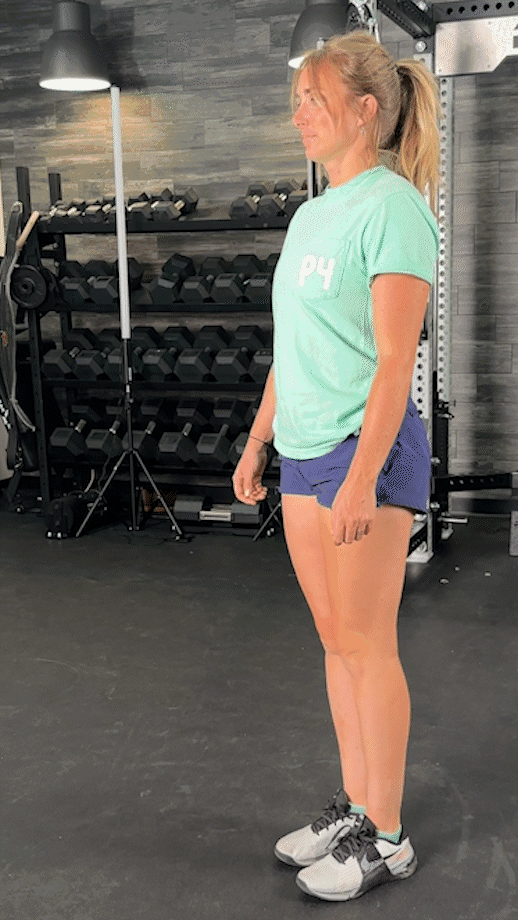
Banded Hip March
Why it’s great: The banded hip march harnesses the power of the humble resistance band to strengthen the hip flexors during a simple marching motion. The movement provides great strength benefits, but also serves as a good warm-up before a heavy lift.
How to do it:
- While standing straight, wrap a resistance band around both feet.
- Lift one leg up as high as possible, keeping the other foot firmly planted.
- Return the first foot to the floor, raising the next foot in a marching motion.
- Continue for the desired duration or number of reps.
RELATED: The Best Resistance Bands for Glutes
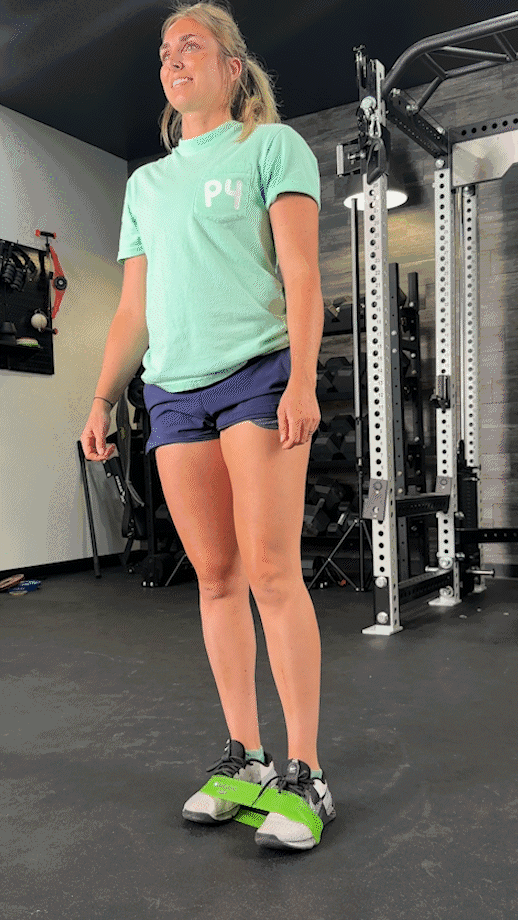
FAQs: Hip Flexor Exercises
What are the hip flexors?
The hip flexors are a muscle group in your hips that stabilize and support the joint during various movements. Muscles in the group include the iliopsoas, rectus femoris, sartorius, and pectineus.
Why do my hip flexors always hurt?
Sports, exercise, and even everyday living activities can require repetitive motions that burn out our muscles. Your hip flexors could, therefore, hurt from overuse, including too much volume of work or too much intensity.
Prolonged sitting tends to cause hip flexor tightness and pain as well, and it is very common, especially in adults with sedentary lifestyles, for pain to be associated with too much sitting.
Can hip flexor tightness cause back pain?
Absolutely.
Tight hip flexors create an anterior pelvic tilt, which increases stress on the lumbar spine and contributes to discomfort, pain, and injury over time.
That’s why adding stretching and strengthening exercises into your workout routine is crucial for living your best and most pain-free life.
Does hip flexor pain come from sitting down?
As they say, “everything in moderation.”
Too much activity will lead to hip flexor pain, but too little activity will also lead to tightness and pain too. Sitting down for prolonged periods leaves your body in a constant state of hip flexion, causing discomfort and pain over time.
To combat this, try standing up regularly throughout your day, at least ten minutes for every hour spent seated. A standing desk is beneficial in alleviating pain caused by a sedentary lifestyle as well.
How do I get rid of hip flexor pain?
Alleviating hip flexor pain takes time and commitment, but a comprehensive combination of stretching, strengthening, and addressing the underlying cause will work wonders.
“Try regularly stretching and strengthening the hip flexor muscles,” recommends Dr. Masi. “Strengthening surrounding muscles, like the glutes and core, can help too.”
When in doubt, consider working with a physical therapist, CPT, or other qualified health and fitness professional.
References
1. Glenister R, Sharma S. Anatomy, Bony Pelvis and Lower Limb, Hip. In: StatPearls. Treasure Island (FL): StatPearls Publishing; July 25, 2022.
2. Christopher ZK, Hassebrock JD, Anastasi MB, Economopoulos KJ. Hip Flexor Injuries in the Athlete. Clin Sports Med. 2021;40(2):301-310. doi:10.1016/j.csm.2020.11.006
3. GBD 2017 Disease and Injury Incidence and Prevalence Collaborators. Global, regional, and national incidence, prevalence, and years lived with disability for 354 diseases and injuries for 195 countries and territories, 1990–2017: a systematic analysis for the Global Burden of Disease Study 2017. The Lancet. 8 Nov 2018: 392.
4. Konrad A, Močnik R, Titze S, Nakamura M, Tilp M. The Influence of Stretching the Hip Flexor Muscles on Performance Parameters. A Systematic Review with Meta-Analysis. Int J Environ Res Public Health. 2021;18(4):1936. Published 2021 Feb 17. doi:10.3390/ijerph18041936
Further reading

Use our exclusive Mikolo Fitness discount code for 5% off your next order (plus other ways to save). Read more
![Best-Tasting Protein Powder (2025): Great Flavors to Satisfy Cravings [Expert-Tested] Cover Image](https://www.garagegymreviews.com/wp-content/uploads/woman-drinking-quest-protein.jpg )
Tired of gross protein powders? Us too. After trying 100 different protein drinks, we’ve created this CNC-approved guide to the best-tasting protein powder. Read more

Our guide to isolation exercises answers common questions about single-joint movements. Read more

In this Iso Leg Press and Hack Squat Machine review, we’ll take a look at this overbuilt machine to see how much value it can bring to your home gym. Read more

